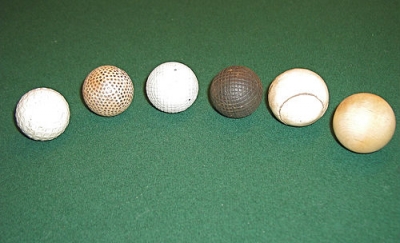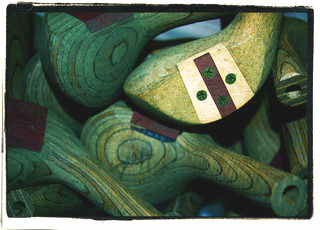By David Hansen, Contributor to GolfTheUnitedStates.com
For many centuries, games have been played using a stick and a ball. While the 18-hole game of golf we know today originated in Scotland, variations of the game began with a stick. If you are at all familiar with golf, you know that investing in a new set of golf clubs can cost a small fortune. This is a far cry from the original stick that the game started with.
The Club: Stick
As with all sports, the game of golf and the equipment used has evolved. Gone are the days of finding a stick and leather ball to enjoy a game of golf. How did golf clubs evolve from a stick found in the forest to intricately designed clubs that can often break the bank?
As early as the 17th century, people were playing the game of golf. Sure it wasn’t run quite like the PGA Tour, but they were still hitting a ball into a hole and the goal was to take the least number of strokes. At the beginning of this game, simple sticks were used to hit the ball.
Sticks were basically made from whatever wood was found lying around. But, as time marched forward, the stick began to be improved. The wood was shaped and Hickory and Persimmon wood were the preferred choice. This wood was stronger, and this gives us a little idea of why some clubs are called ‘woods’.
Did the Ball Actually Change the Game?
 |
As blacksmiths manipulated the club being used, the golf ball was also tweaked and designed. The leather golf ball was maintained for about 200 years, but as the golf ball finally evolved, the club followed. Around 1850, the leather ball was replaced with the ‘gutty’. This was a golf ball made from a molded rubber called gutta-percha.
From Wood to Metal
The introduction of this new ball caused iron to enter into the creation of club heads. The wood club was replaced with metal, and thus some clubs began to be called irons. At this time, clubs were extremely heavy. They were difficult to play with and could easily damage the leather ball.
After the head of the club began to experiment with iron, designers began making the shaft of the club from metal also. Blacksmiths experimented with steel for a while. In 1925, steel shafts began being produced, but steel clubs weren’t legalized until the Prince of Wales played with them in 1929. Although it was heavy, steel shafts were used for almost thirty years, and it wasn’t until the 1970s that shafts began being made with the lightweight graphite.
A Club for Every Occasion
With the development of all different types of clubs, golfers wanted all the clubs they could afford. They were in the search for clubs that were best for every situation. It was not unusual for caddies to lug around 20-30 clubs for a single golfer. Caddies were grateful in 1939 when the rule was changed to only allow 14 clubs on the course, and the club numbering system used today was introduced.
 |
WWII-Present Day
After WWII, golf clubs began to be manufactured. This made it possible for the average Joe to purchase golf clubs at an affordable price. Some of the more modern changes to the golf club are fairly recent changes. It was only in the 1980s, for example, that wood clubs were completely replaced with metal clubs. And since then, golf club technology has improved even more. The lightweight graphite shaft is now accompanied by a lightweight titanium head.
After WWII science took over most innovations in the golf club world. Today there are many choices and brands of clubs. If you are ready to invest in a set, it can be a bit overwhelming. Luckily for golfers, club fitting is available and possibly one of the smartest things you can do before making a purchase.
Details:
About the Author: David Hansen works with the Titanium Processing Center, which provides the metals that several established golf manufacturers use to make their products. He is an enthusiastic writer that enjoys finding opportunities to share his knowledge and passion with others.
| Related Links | Comments on this article? | |
|
Maryland National Golf Club Hollow Creek Golf Club Rocky Gap Resort PB Dye Golf Club in Ijamsville Whiskey Creek Golf Club |
E-mail Jeff Rendall, Editor: jrendall@golftheunitedstates.com |












